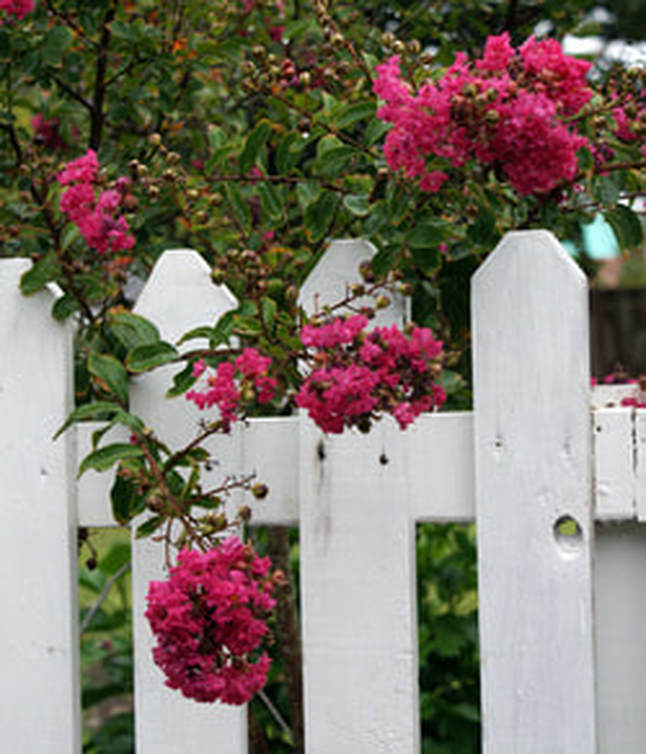|
- by Karen Fineran
"The house was set up close to the road, with a good hog-wire fence around the not very big yard, and with some crepe myrtles in bloom the color of raspberry ice cream and looking cool in the heat in the corner of the yard . . .” from All The King’s Men by Robert Penn Warren With the dog days of summer nearly behind us, we are happily ushered from summer into fall by the refreshing explosions of color throughout Bay St. Louis from its crepe myrtles. Those audacious spikes of billowing blooms really hold up to the worst summer heat that the Deep South throws at them. Native to China, and brought here from England in the late 1700s, crepe myrtles are ubiquitous on the Gulf Coast, and lend grace and charm to nearly every yard, park and commercial landscape around. As you give some thought to your fall planting, consider adding a few more crepe myrtles to your landscape. Crepe myrtles come in a rainbow of colors, from hot pinks and reds to cool whites and lavenders. With so many varieties and colors available, crepe myrtles can accent nearly any color scheme or design that you have in mind. They can be used as a single specimen tree or in mass as a hedge or screen, and can serve wonderfully to mask or camouflage unsightly views, fences, sheds, etc. They also add interest to your garden in the fall, when their leaves turn brilliant red or orange. You can find crepe myrtles in dwarf varieties that are only several feet high, to standard trees that grow up to 30 feet. Check with your favorite nursery to find the right size tree for your needs. Finally, crepe myrtles are essentially trouble-free plants – they grow quickly, love heat and humidity, tolerate drought, and are a time-tested winner (for over 200 years!) in our sultry climate. Planting Tips: Planting your crepe myrtles in the fall will yield the best results and hardiest trees. For best performance, plant in a sunny location that has good air circulation and a well-drained soil. (In partial shade, flowering may be reduced and plants are more susceptible to leaf spot disease.) Dig a planting hole for crepe myrtles twice as wide and the same depth as the original root ball. Water deeply to encourage good root system establishment and use pine mulch around the tree. Fertilize at least annually. Pruning: Late winter is the best time to prune because, with the leaves gone, you can easily see all the branches and which ones need removing. Your goal should be to maintain well-spaced, main trunks with handsome bark and to thin out the center to permit easy penetration of sunlight and air. But beware of committing “crepe murder”! If you prune too heavily, it will ruin the gorgeous natural form of the trees, and produce weak spindly branches too weak to hold up the flowers. Remove suckers coming up from the base, side branches growing from the main trunks up to about 4 feet high, higher branches that are growing inward toward the center of the tree, any crossing, rubbing or dead branches, and any branches growing at awkward angles that detract from the tree’s appearance. Finally, you may have wondered about the proper spelling of the word – is it a Crepe Myrtle, or a Crape Myrtle? Apparently, either spelling is considered correct, but I personally prefer the “e” spelling because the crinkled flowers seem reminiscent of crepe paper. Regardless of how you spell them, go out this fall and plant a few of them around your home or business to beautify the Fourth Ward and Bay St. Louis! Comments are closed.
|
Categories
All
Archives
July 2024
|
Shoofly Magazine Partners
Our Shoofly Partners are local businesses and organizations who share our mission to enrich community life in Bay St. Louis, Waveland, Diamondhead and Pass Christian. These are limited in number to maximize visibility. Email us now to become a Shoofly Partner!



























 RSS Feed
RSS Feed























